It was just a few short months ago that Atlassian co-founder and co-CEO, Scott Farquhar, revealed Atlas live on-stage at Team ’22.
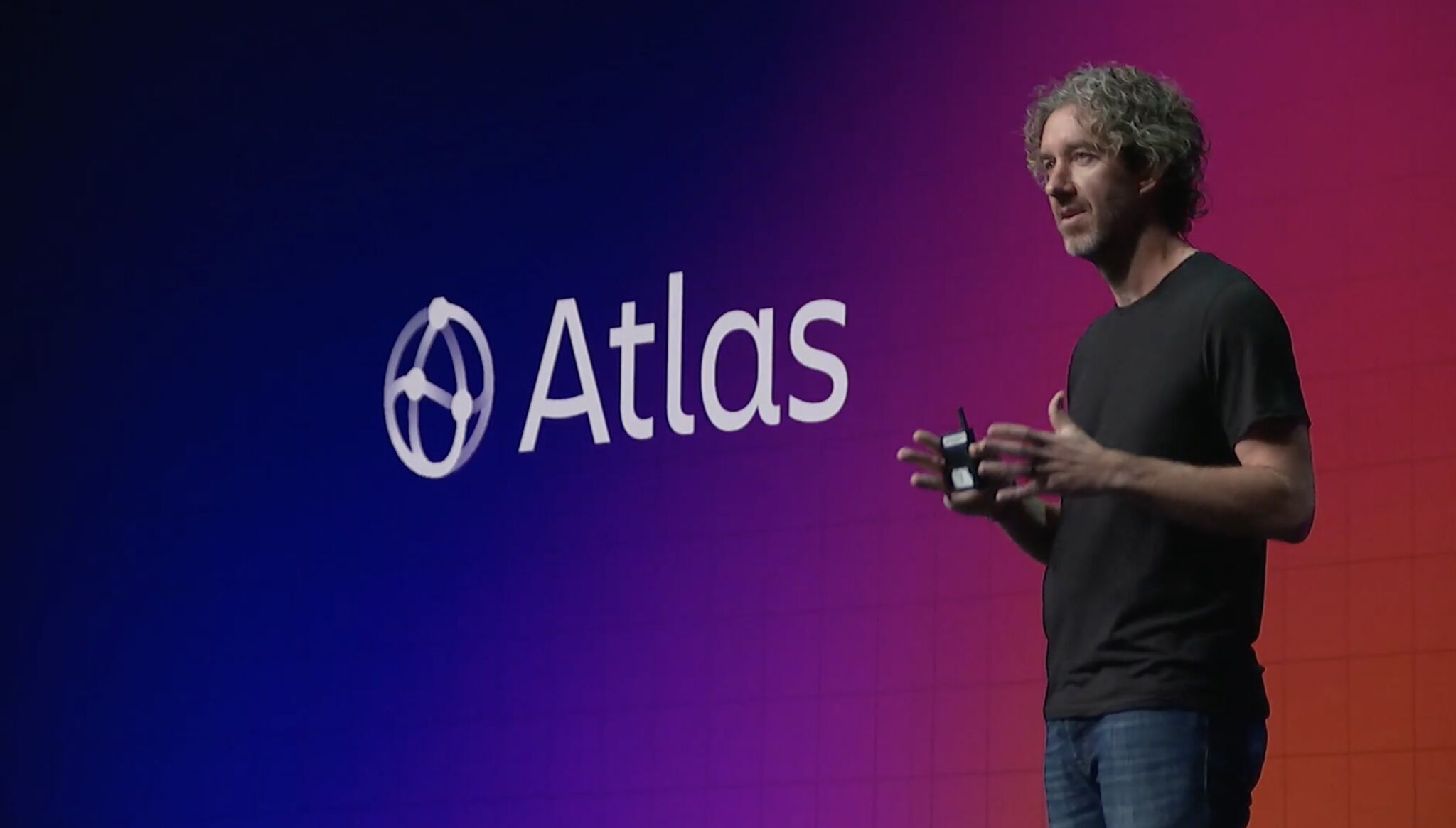
Today, we’re excited to share that Atlas is out of beta – “wait, what’s Atlas?”. Watch the video below for a quick preview, and check out our beta announcement post for an in-depth look into why we built Atlas and how it works.
There’s never been a better time to join the likes of Canva, Auth0, and LaunchDarkly, who’ve made Atlas their new teamwork directory.

Let’s take a look at what’s new in Atlas with today’s release.
Introducing pricing: Starting free up to 35,000 users
Atlas is designed to help teams communicate the context and progress of their work with other teams across your company. That’s why the Free plan allows up to 35,000 users so that everyone can experience the value of using Atlas at scale. The Free plan includes everything that was available during beta.
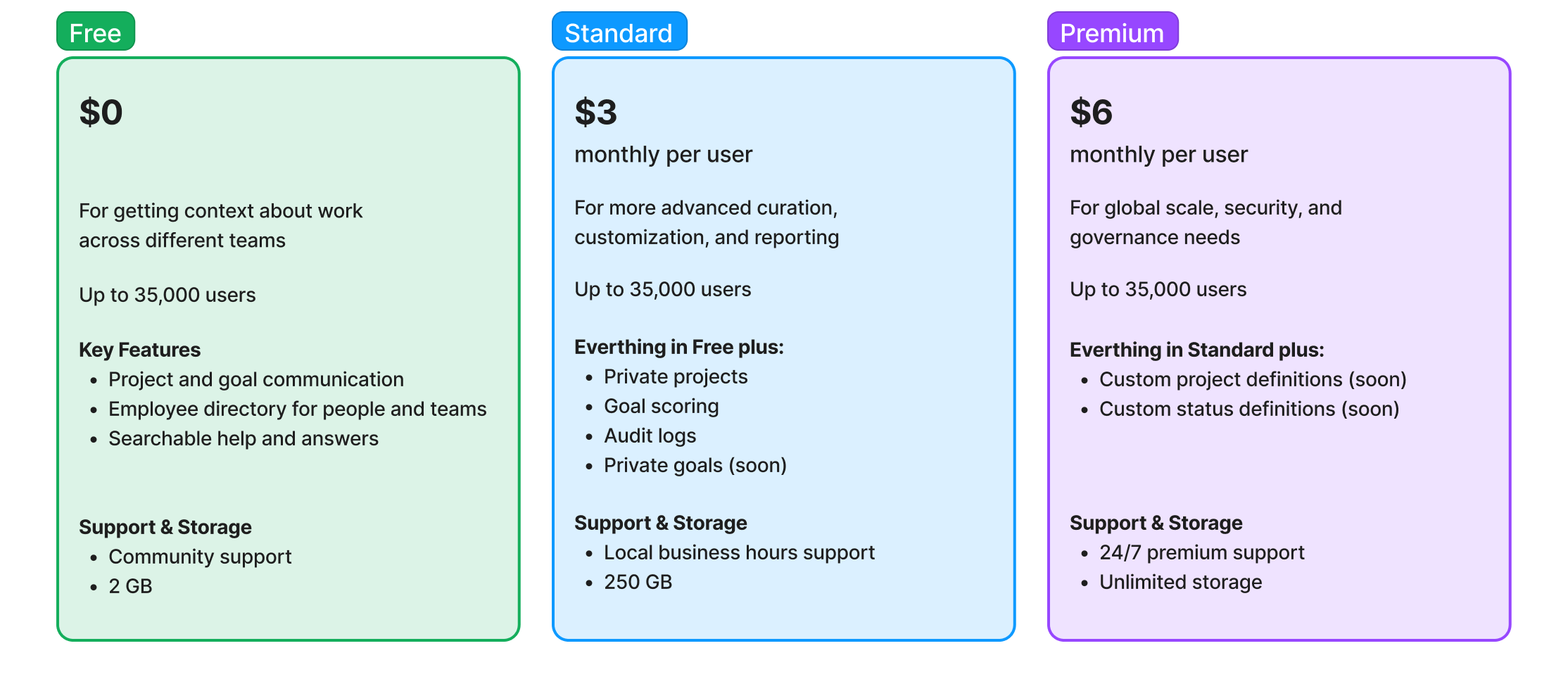
We’re also introducing two new paid plans – Standard and Premium – which cater to companies that have advanced customization, security, and support needs. Like Jira and Confluence Cloud, you only pay for users that have access to Atlas. And pricing is progressive, so the more users you have, the lower the average price per user. Visit our website to learn more about Atlas’s pricing.
Richer integrations, tighter controls, and more flexible reporting
We’ve been shipping new features and improvements at a rapid rate since Team ’22. And today, we’re releasing more for the first time. Check out some highlights below.
🔗 Link and sync Jira epics to streamline planning and communication
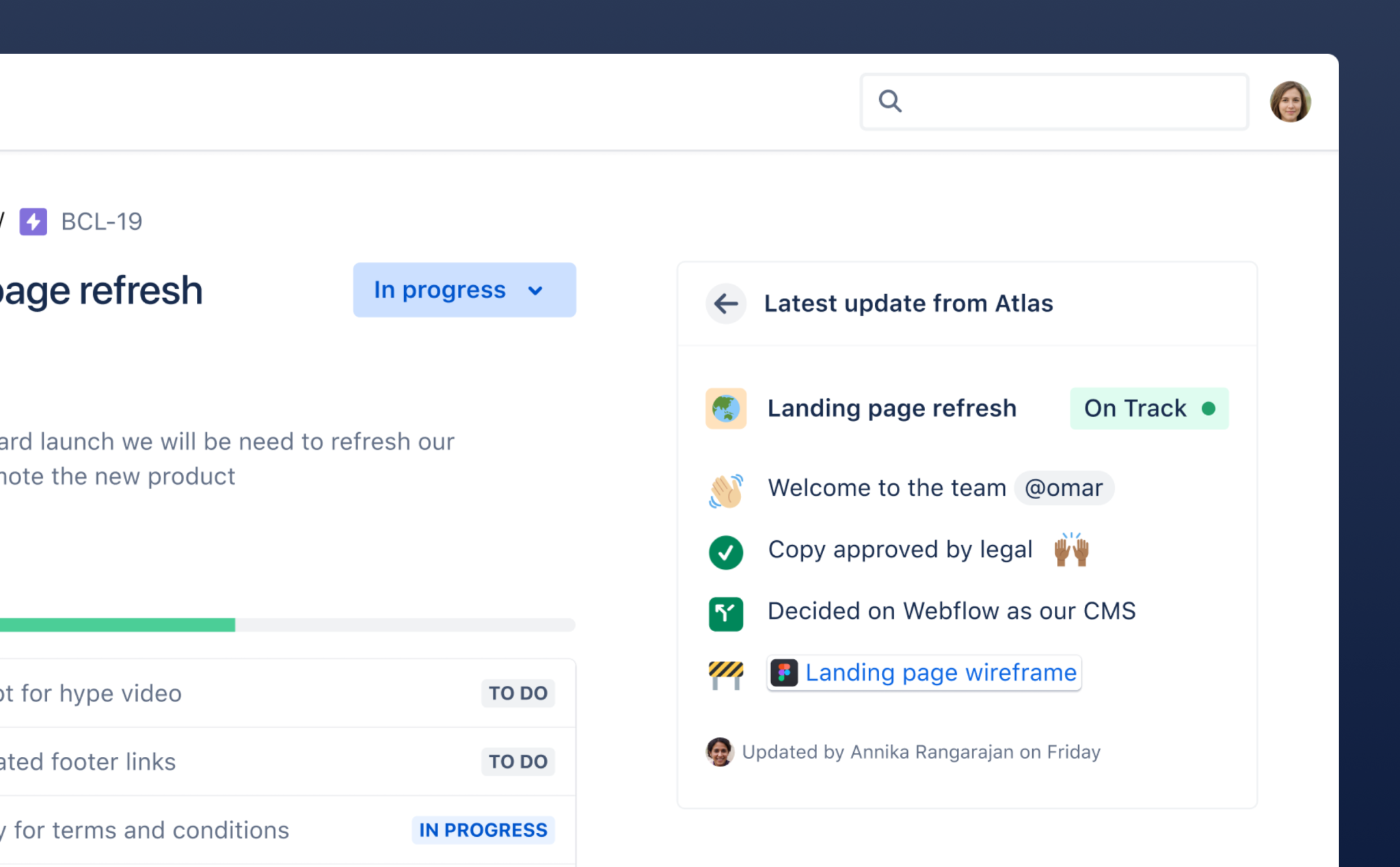
Available on the Atlassian Marketplace, the free Atlas for Jira Cloud app allows you to connect Jira epics and Atlas projects to keep their titles, target dates, start dates, and tags in sync. This helps inform and improve team planning with quick access to linked projects’ statuses, updates, and briefs inside Jira.
🔒 Keep sensitive projects under wraps

While Atlas is all about encouraging open communication and transparency into work in progress, we know that there will always be bodies of work that must be kept under wraps. With private projects on the new Standard plan, you can restrict the viewing and editing of a project to specific individuals and teams.
🎯 Give goals a projected score
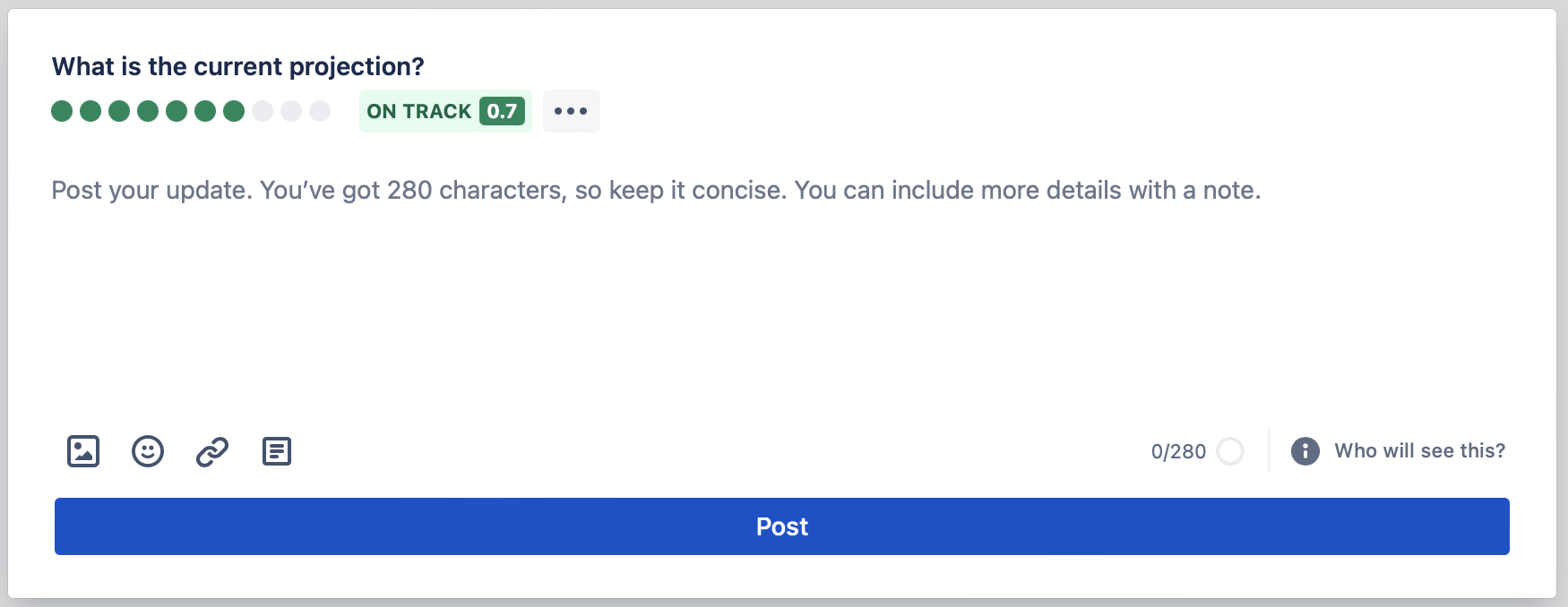
Goals in Atlas are a flexible way to communicate how your teams are progressing toward achieving shared outcomes. You can define parent goals and subgoals, assign owners for each one, and link to contributing projects. And now, with Atlas Standard, you can give goals a projected score based on how confident you are that you’ll meet your goal by your target date. This method of scoring goals is best if you use OKRs (Objectives and Key Results).
🔍 Create, share, and export roll-up reports without using code
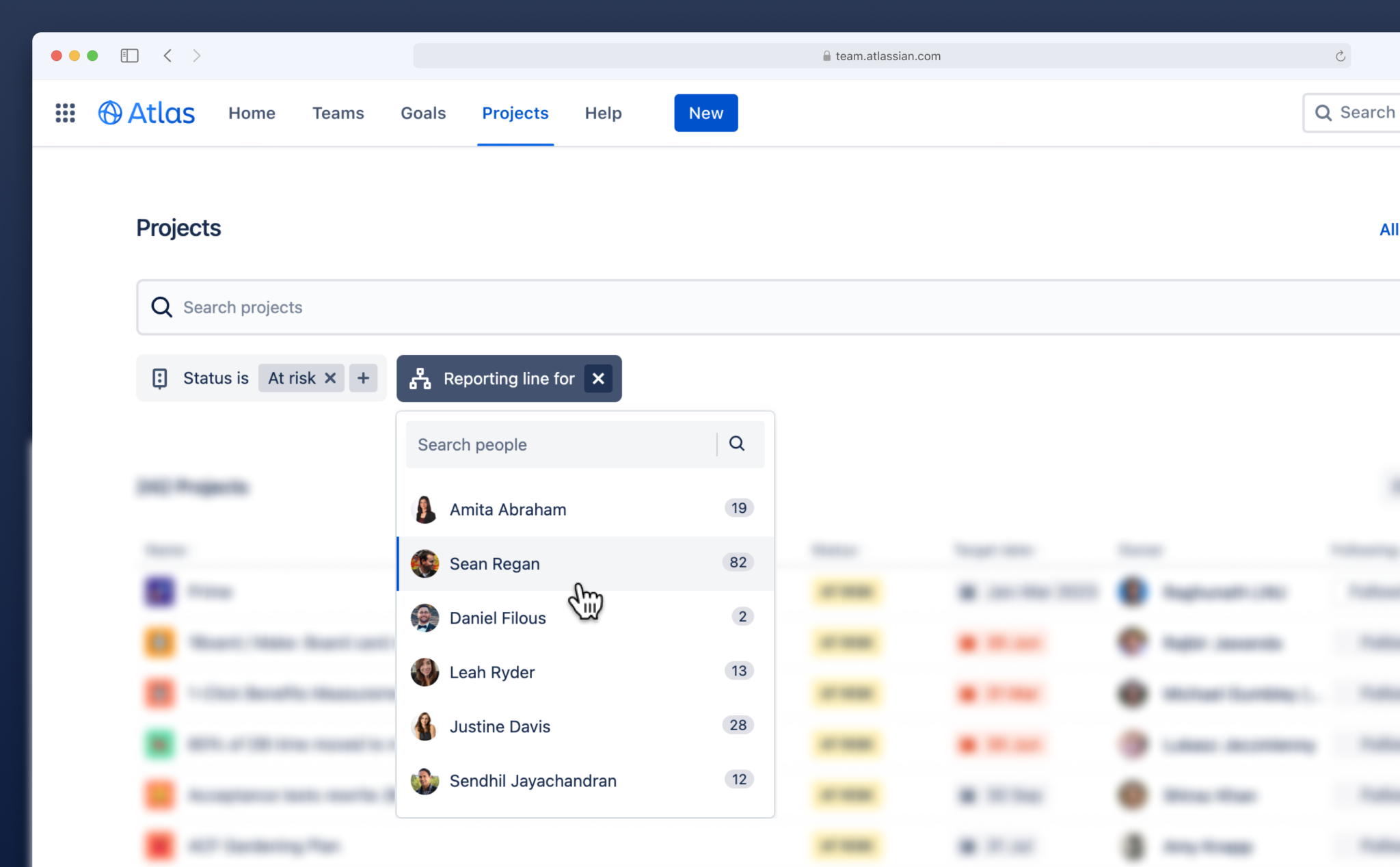
The projects and goals directories make it fast and easy to produce roll-up reports with quick filters for status, contributor, tag, team, owner, and reporting line. You can embed the dynamic results in Confluence or Jira Cloud with Smart Links or export to CSV to slice and dice any way you want.
A new way to motivate teammates
A kind, connected workplace underpins every effective company. When people feel recognized they’re happier and more productive.
👏 Recognize great work with Kudos

With Kudos, Atlas enables everyone to easily recognize great work. It’s a simple, fun, and personal way to say thank you to peers who go above and beyond.
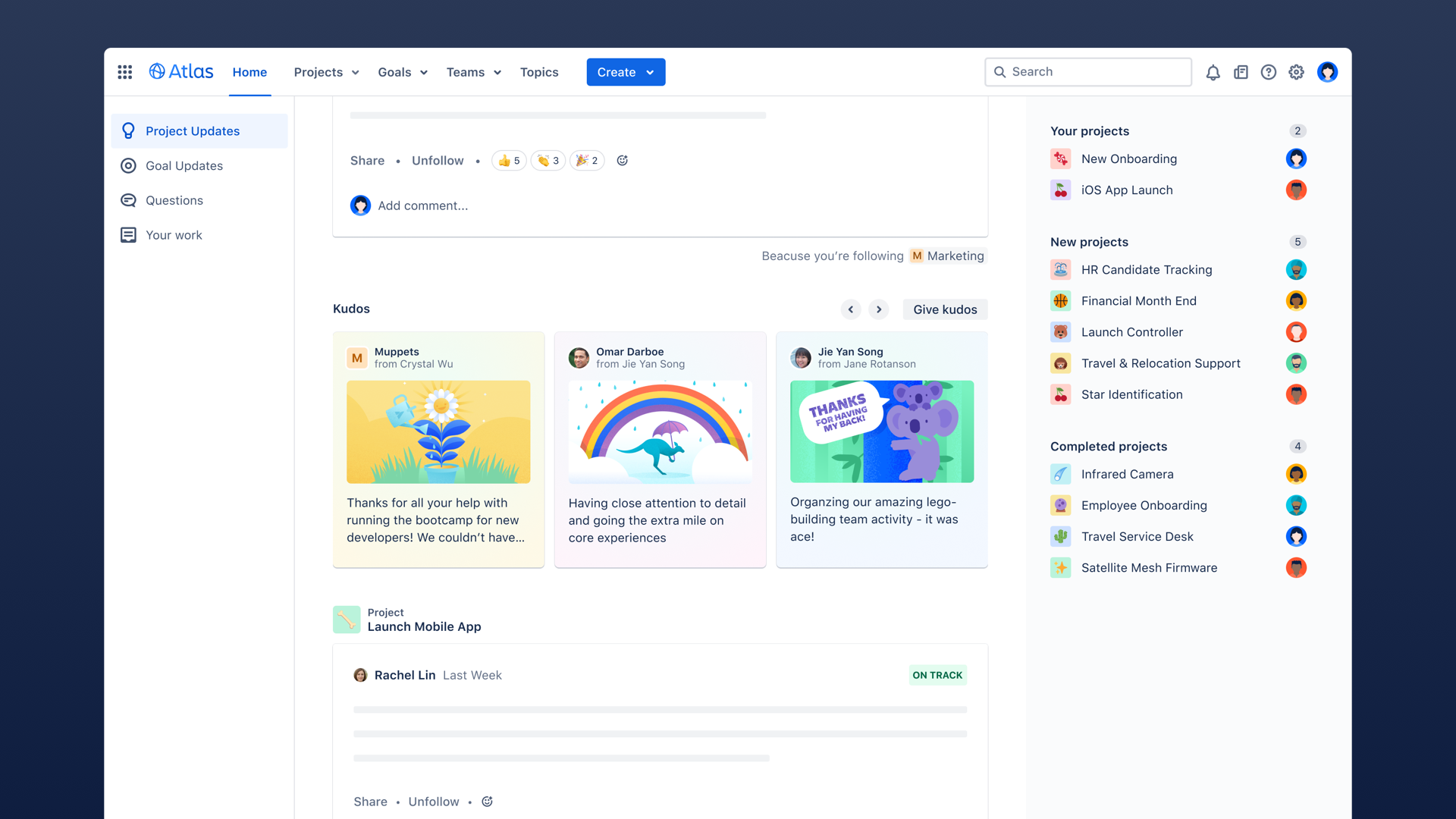
Kudos appear on individual and team profiles, as well as in your Atlas digest and feed. So, when you’re ready to fire up Atlas to stay in the loop, you’ll see all of your followers engaging with your updates and recognizing your team’s work. This helps everyone feel more connected by bringing some of the benefits of synchronous time into an async world.
Stay in sync, async today
Join the thousands of teams that are already using Atlas to achieve alignment across teams and enable greater outcomes, like our friends at Warby Parker.

What are you waiting for? It’s free to get started.

